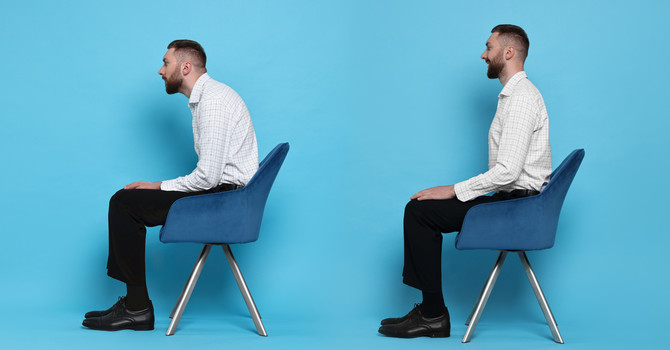What Do Percussion & Vibration Do?
Percussion and vibration devices have existed for centuries, but only recently become wildly popular. They are often found in training rooms and workout centers, and some folks purchase them for home use. People typically rub them all over (like a sander) in an effort to address every type of pain, but often don't know how to use them optimally. Both of these forces help by beginning to break adherent bonds that form between tissue layers, called densifications. These alter movement of fascia around joints, nerves, blood vessels, and organs, causing pain and dysfunction. Percussion involves the vertical movement of a pistoning head, while vibration uses an oscillatory action. Percussion can be much more targeted and aggressive, whereas vibration is typically gentler and broadcast widely. Research supports that the combination of a pistoning or oscillatory force from percussion / vibration devices used in conjunction with a manually applied shear force such as that used in Fascial Manipulation® (FM) can accomplish more to change tissue dysfunction than either alone. Percussion and vibration are usually less uncomfortable than FM, but also not as effective at resolving densifications. Which to use depends on the body part, the body type, and the problem being addressed. Generally speaking I may use vibration for tissue preparation before performing FM on the abdomen or other sensitive region. For areas that have a boney backdrop or thicker tissue I prefer percussion devices for tissue preparation before treating manually with FM.
Here's a short video I made outlining why, how, when, and where to consider using a percussion device, as well as thoughts on choosing the most appropriate device.
How Should These Devices Be Used?
The simplest approach that many people use is to apply the device where they hurt (low back, shoulder, hip for example). But if putting the device on a place seems to make it worse then stop! Especially if the place that hurts is an acute (new) injury that involves swelling. It may be better to wait, or use the device somewhere else. You don't want to use it over an area where the skin is not intact, such as an open wound or recent surgery. I also tend to avoid areas with any bruising. I typically don't use either device on the head or the front of the neck. If what you’re treating is not changing, it may be you need to work on a different site or the problem may need more than just a device. It's good to appreciate that where it hurts isn't always where the problem is - often a painful site is a compensation for something somewhere else.
When I'm using a device I target specific densified points identified with palpation, as opposed to moving it all over. I alternate between percussion/vibration for a few minutes followed by FM for a few minutes to the selected sites, moving back and forth until the points are improved or resolved. This gives the device a break so it won't overheat, and also gives both me and the patient a break from the FM. For many back and pelvic problems I am also working in the calf, and for many neck and should issues there are often associated densifications into the arm. Each person is different, even if they have the same diagnosis. One person's plantar fasciitis may stem from densifications in the heel, and another from the calf. So where best to work is very individualized. I teach the folks I work with how and where to use the device, often in follow-up to sites treated or in preparation for future treatment.
Here are some examples from the Fascial Manipulation® (FM) model of points to be investigated for the presence of densified fascial layers for someone with complaints and history involving these body regions. I then use a combination of percussion / vibration and FM to the correlating points that seem to be the most involved.
What's the Best Device?
Percussion typically has more application and versatility than vibration, so I generally recommend these devices more. I have used the Hypervolt device (made by Hyperice) for years with good results. But I don't believe the average person needs to spend that much ($150 - $350) for a personal use device. They all typically carry a one-year warranty, and paying more does not extend this. A company called Bob & Brad makes a great product at a very reasonable price. I like their C2 model, as well as their mini Q2 which is good for travel or for those who have a harder time handling the full size device. Whatever device you choose, it's good to take note of the changeable heads that come with it. Many units have multiple heads that you really don't need, yet don't include a soft, squishy, accordion-style head that's good for really bony places like ribs, hands, and the top of the feet. Both the Hypervolt and Bob & Brad devices include this head. Which head to use is determined by the body part being treated, the sensitivity of the area, and the tolerance of the person. I use some heads more than others (the T-shape, the round ball, and the accordion heads are typically my go-to's).
Here are some of the Hyperice products I have, with the percussion device (above left) being what I use the most. The percussion device head circled in red is the soft, accordion one that many devices do not include. The two with red arrows are the ones I use most commonly, along with the accordion one. The top right image is a vibration roller, and on the bottom right is a small vibration ball. My experience with the small ball has been that they did function well or for very long, but perhaps they have improved.
Take Action
Percussion /Vibration devices can be super helpful to expedite recovery and promote self-treatment. But like any tool it's only as good as the understanding of the operator. Fortunately they are relatively risk-free and inexpensive compared to many other devices available for health and wellness. If your efforts are not satisfactorily resolving your issues and/or you would like to learn more about how you may benefit from fascial work please give me a call, send a text, book an exploratory session, or schedule a consult. You have lots of options: act on them!
Wishing You Health & Joy!
Colleen
Here's a short video demonstrating me using percussion and vibration in an actual treatment session.
References:
Cheatham, Scott W., et al. "Mechanical percussion devices: a survey of practice patterns among healthcare professionals." International journal of sports physical therapy 16.3 (2021): 766.
Comeaux, Zachary. "Dynamic fascial release and the role of mechanical/vibrational assist devices in manual therapies." Journal of Bodywork and Movement Therapies 15.1 (2011): 35-41.
Martin, Jack. "A critical evaluation of percussion massage gun devices as a rehabilitation tool focusing on lower limb mobility: A literature review." SportRxiv Preprints (2021).
Roman, Max, et al. "Mathematical analysis of the flow of hyaluronic acid around fascia during manual therapy motions." Journal of Osteopathic Medicine 113.8 (2013): 600-610.
Welling, Aarti, et al. "Investigating the Effects of Percussion Therapy on Ultrasonography-Diagnosed Thoracolumbar Fascia on Trigger Points and Hyperlordosis in Low Back Pain: A Placebo-Controlled Trial." Alternative Therapies in Health & Medicine 30.9 (2024).





